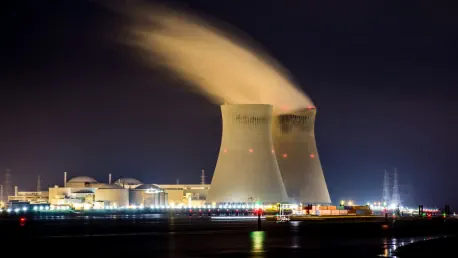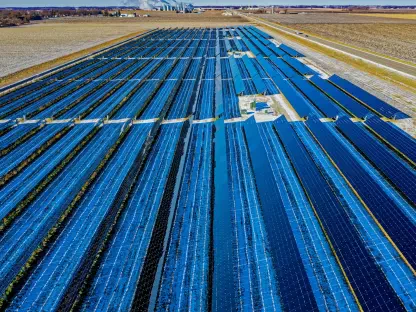Christopher Hailstone has extensive experience with energy management, renewable energy, and electricity delivery. He is our Utilities expert and offers valuable insights on grid reliability and security. In this interview, he discusses the recommendations of the Utility Policy Advisory Committee (UPAC) regarding adding a small nuclear reactor to Colorado Springs Utilities’ (CSU) power generation fleet, the feasibility study conducted by UPAC, the costs involved, legislative perspectives, potential nuclear sites in Colorado, and several other related topics.
Can you provide an overview of the recommendation from the Utility Policy Advisory Committee (UPAC) regarding adding a small nuclear reactor to Colorado Springs Utilities’ (CSU) power generation fleet?
The Utility Policy Advisory Committee (UPAC) recommended that Colorado Springs Utilities (CSU) consider adding a small nuclear reactor for additional power generation. This volunteer advisory group conducted research on the feasibility of nuclear energy for CSU, examining current technology for small modular reactors (SMRs), as well as regulatory, permitting, and environmental issues for such a project.
What specific technologies for small modular reactors (SMRs) did UPAC consider during their research?
UPAC looked into various technologies for small modular reactors (SMRs). They examined leading companies in the SMR sector, such as NuScale, X-energy, and TerraPower, which have been making significant advancements in this field.
How did UPAC address regulatory, permitting, and environmental issues in their feasibility study for nuclear energy in Colorado Springs?
UPAC considered numerous regulatory, permitting, and environmental aspects in their feasibility study. They analyzed the procedures and challenges involved in obtaining the necessary permits and approvals, as well as the potential environmental impacts of deploying nuclear energy in Colorado Springs.
What were the estimated costs for constructing nuclear power projects, according to the UPAC report? How did these cost estimates vary among different companies in the SMR sector, such as NuScale, X-energy, and TerraPower? What factors contributed to the cost differences among these companies?
The estimated costs for constructing nuclear power projects varied among different companies in the SMR sector. For instance, NuScale’s project was estimated at $12.9 billion, X-energy’s at $10.7 billion, and TerraPower’s at $7.4 billion. Factors contributing to these cost differences include the varying stages of technological development and design complexity, as well as geographical and logistical considerations.
How do state lawmakers in Colorado currently view nuclear power in relation to “clean energy”? Can you explain the current status and implications of House Bill 25-1040, titled “Nuclear Energy as Clean Energy”?
State lawmakers in Colorado are currently debating whether nuclear power should be classified as “clean energy.” House Bill 25-1040, titled “Nuclear Energy as Clean Energy,” has passed on its second reading in the statehouse. The bill aims to include nuclear energy as part of the state’s clean energy strategy, which would encourage the development and adoption of advanced nuclear technologies.
What are the potential sites being considered for new nuclear power plants in Colorado? Why was Pueblo identified as a possible site for a nuclear power plant? What is the status and future plans for the Comanche Generating Station in Pueblo operated by Xcel Energy?
Pueblo has been identified as a potential site for new nuclear power plants in Colorado due to its existing infrastructure and energy production facilities. The Comanche Generating Station, operated by Xcel Energy, is set to retire its 857-MWE Unit 3 by 2031. Units 1 and 2 have already been retired or are set to be retired soon. The site provides an opportunity for repurposing from coal to nuclear energy.
How might Colorado Springs Utilities’ existing power generation portfolio be impacted by adding a small modular reactor? What recent changes have been made to CSU’s power generation fleet, such as new projects or plant closures? What are CSU’s plans for adding more renewable energy sources like wind, solar, and battery storage?
Adding a small modular reactor could diversify and strengthen CSU’s power generation portfolio. Recently, CSU brought the 175-MW Pike Solar project online and closed the 208-MW Martin Drake coal-fired power plant. CSU also plans to close the 207-MW Ray Nixon coal plant by the end of the decade, while adding more wind, solar, and battery storage to their energy mix.
Can you explain the concept of scalability in the context of small modular reactors (SMRs)? What are the advantages of being able to build and expand SMR facilities incrementally?
Scalability in the context of SMRs refers to the ability to build and expand these reactors incrementally based on energy demand. This allows utilities to start with a smaller output and gradually add more modules as needed, reducing initial costs and aligning expansion with actual increases in demand.
What lessons can be learned from the Utah Associated Municipal Power Systems (UAMPS) SMR project, which was canceled in 2023? What were the reasons for the project’s cancellation, and how might they inform future SMR initiatives?
The UAMPS SMR project was canceled due to escalating costs and diminishing investor interest. The key lessons include the need for robust financial planning, transparent cost assessments, and securing committed investment early in the project. Future initiatives can benefit from these insights to avoid similar pitfalls.
How could partnerships or power purchase agreements with other utilities benefit CSU’s potential nuclear power projects? Which Colorado and neighboring state utilities might CSU consider partnering with in nuclear energy projects?
Partnerships or power purchase agreements with other utilities can spread financial risk and leverage shared expertise. CSU might consider partnering with utilities such as Xcel Energy, Black Hills Energy, Tri-State Generation and Transmission, and Nebraska Public Power, all of whom have experience or interest in nuclear energy projects.
What is your forecast for the future of nuclear energy in Colorado?
The future of nuclear energy in Colorado looks cautiously optimistic, given the legislative interest and technological advancements in SMRs. If the regulatory and financial hurdles can be effectively managed, nuclear power could become a significant part of the state’s clean energy portfolio in the coming decades.









